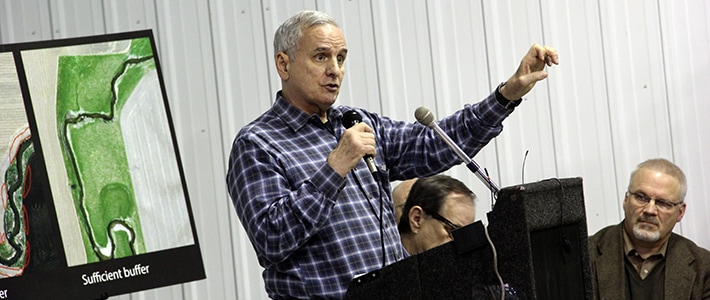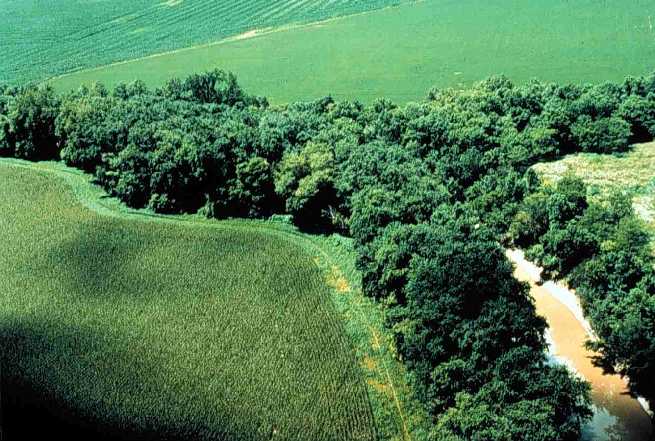|
The Governor’s Town Hall Water Summit was held January 27, 2017. In his opening remarks at the summit, Governor Dayton gave a passionate summary of the state of the state’s water, citing Minnesota Pollution Control Agency studies that found that across the state, about 40% of surface water does not meet standards. In some parts of southwestern Minnesota, more than 90% of surface water is not fit for human consumption and does not support wildlife. The Governor addressed the human aspect of pollution, saying that people who are causing upstream pollution are not suffering from that pollution, because it moves downstream to affect others. He told the audience that Minnesotans need to face facts, and look at what legacy we will leave to our children and grandchildren.
The ‘buffer bill’ that was passed in 2015 required that buffer strips be placed along streams and ditches in Minnesota. 50’riparian buffers were required for natural streams, and 16.5’ buffers were required for ditches. The law included deadlines (November 2017 for streams and November 2018 for ditches) and enforcement mechanisms. In 2016, the law was amended to clarify that buffers are required for public ditches but not private ditches. Now, in 2017, a bill has been introduced to repeal the buffer law all together. Governor Dayton vowed that he will compromise no further on buffers, citing reports from the implementing state agencies that good progress is being made and the actual number of farmers who need to take additional actions is relatively small. He says that by giving away private ditches in 2016, he’s compromised enough. The water in private ditches runs into public waters, too. It is all connected. State agencies (DNR and BWSR) testified in a recent hearing that already about 75-80% of farmland with ditches or adjacent to streams are compliant and have required buffers, and that they believe that the law will be successfully implemented by the November 2018 deadline even though thousands of parcels throughout the state still need to do something about water quality. Governor Dayton’s budget includes funding for farmers who lose valuable farmland to buffers. Also, federal funding for CREP, the Conservation Reserve Enhancement Program, was recently received in Minnesota that will pay farmers to retire lands in vulnerable areas. Through CREP, $500 million will be spent on farmland conservation in the near future. The summit was held at the University of Minnesota Morris, with satellite participation at other U of M campuses in the state. You can watch the full summit on YouTube.
0 Comments
Leave a Reply. |
| LWV Upper Mississippi River Region | UMRR blog |


 RSS Feed
RSS Feed